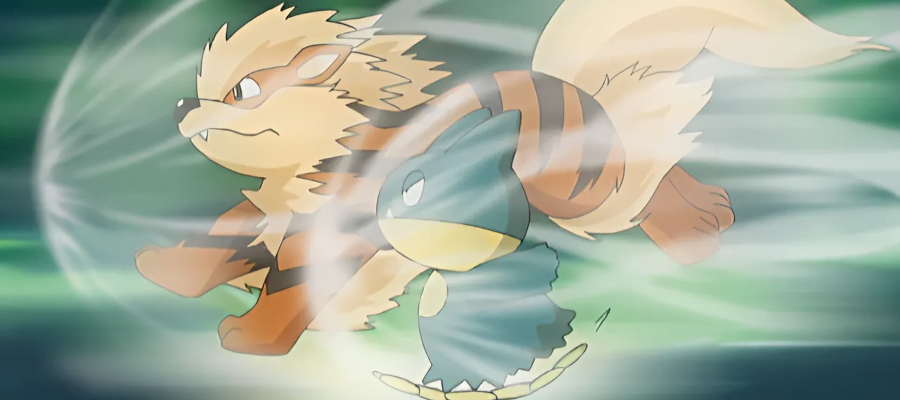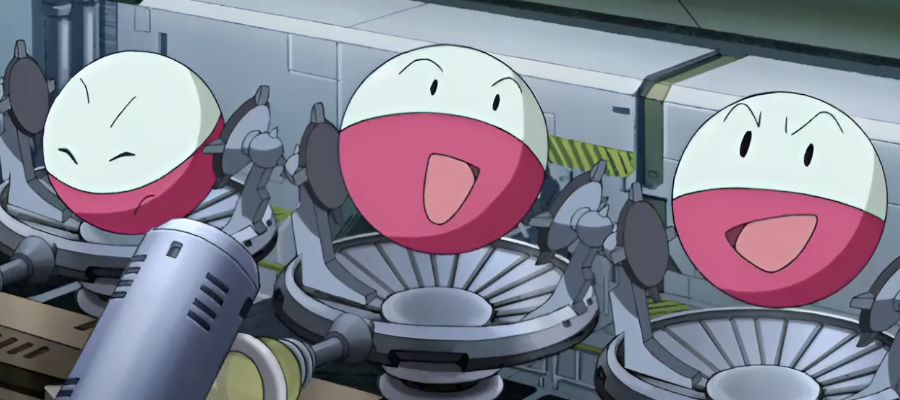In the context of Pokemon competitive play, speed is not everything but it is a lot.
Pokemon is a turn-based game. In the context of a generic, simplified version of the game, acting first is a highly valuable advantage. If everyone hits everyone for 3 damage, and everyone has 10 health, the person who hits first will kill their first opponent, then score an extra hit on the next opponent, and this advantage cascades. Now, Pokemon isn’t that simple a game, and there are a lot of multiplying advantages but one of the things in that advantage space is wrestling over getting to be faster, because being faster is incredibly important.
Now there’s even more to this in that Pokemon don’t have fixed stats. In order to give the Pokemon more individuality, each Pokemon has what we call a ‘base’ stat value, but then a combination of factors – like their level, how they levelled up, and individual genetics of each Pokemon – they can have a range of how they express those stats. So Electrode has a base speed at all levels of 150, but at level 100, that can be a speed of 222 or a speed of 139, or almost anywhere in between. Now that is pretty quick, but consider that this means the slowest Electrode is slower than the fastest Gholdengo, a Pokemon that’s definitely seen as fast but certainly wouldn’t be in the running for what people consider ‘the fastest.’
But then there’s also priority moves. Some moves have as a trait of what they are, the ability to happen faster than normal actions. This system at first was just ‘these moves happen first’ but then, as with so many designs in Pokemon, this idea got permutations, so there are moves that happen firstest, thanks to extremely high priority, and there are moves that have to happen last, thanks to having ‘negative priority.’ This is useful for some moves that need to be able to work faster than other moves to make sense. Protect, for example, prevents you from being damaged by an attack – if it goes off after an attack that’s pretty useless. These create ‘priority brackets’ – the game looks for the move with the highest priority (which can be +5 at the highest point), does all the moves in that priority based on the Pokemon’s speed, then down the next Priority, then down down down. Now normally, with two to four moves being used, these brackets don’t really have to be complicated – people aren’t usually going to be using multiple moves in the same priority bracket unless it’s at 0.
But then also in addition to this, some Pokemon moves change the speed of the Pokemon, or of the Pokemon’s opponents. Moves like Dragon Dance improve the speed of the Pokemon that uses it, and moves like Tailwind temporarily improve the speed of your whole team. Some attacks bring speed reduction with them as well – the seemingly unimpressive Icy Wind doesn’t do a lot of damage, but you’ll see it a lot in competitive Pokemon, because it slows down both opponents by ‘one stage’ – it on its own, it reduces your opponents’ speed to 2/3rds of what it was. To use our Electrode example, the fastest electrode gets hit with a Icy Wind and suddenly they’re slower than that Gholdengo I mentioned.
Am I forgetting anything in speed –
Oh yeah! Ties! What happens if two Pokemon have the same speed stat? Well, the game flips a coin. And in the context of the top tier of play of the game, where people are making optimal choices and the Pokemon are all being sculpted to be perfect to their task, these can happen a lot of the time. It’s not as common for two Pokemon to wind up on the same speed when people have been doing things to mess with speed in these fractions, but it’s not impossible to happen.
Oh! Oh and uh, Trick Room! Okay yeah, Trick Room, so Trick Room reverses the order of everything within its priority bracket. Which doesn’t mean the lowest priority moves happen first; highest priority moves still happen first, but in reverse speed order. Then next priority, again in reverse speed, over and over all the way down the stack. This means moves like Protect and Helping Hand still do their job, and even in Trick Room, Prankster Pokemon –
Oh yeah, Prankster Pokemon are Pokemon with Prankster, an Ability, which isn’t a move. They get improved priority on some non-damaging moves, but only if they’re firing off on non-Dark pokemon. There’s some unclear wording here, but the point is, Prankster can grant some moves priority, which also can relate to speed.
Anyway, Trick Room is a way to turn the slowest Pokemon into the fastest Pokemon, for the five turns of Trick Room. If you increase speed in this, you’re going to make your Pokemon move later. But you might want to do that anyway when the Trick Room is fading because you can time it so you slow your opponent down or speed yourself up juuust as the Trick Room effect ends.
I didn’t actually know, when I started this, what I was going to do with this. At first I thought I’d give you a rundown on what speed tiers are, on the balancing math between being faster or tougher, and how they don’t necessarily work out between one another. But what’s really remarkable to me, now I look at this, just explaining the basics has taken all these words, all this time, and all that is just explaining how the speed system works.
This is all just one part of the combat system, and it’s a really important one. Speed is a mechanic that needs to function with all these details and layers in a way that the other stats – the two types of attack and defense and hit points don’t. For the most part, the math of how those stats work is just comparative. Attack gets measured against defense, special attack versus special defense and that’s kind of all it needs to do.
But speed?
Speed has to work a lot of different ways. And you need to be able to track these values real quick, consistently, every time, while people are doing things to change and adjust them.
Speed is really, really important to playing Pokemon well. It’s not everything.
But it’s a lot.


